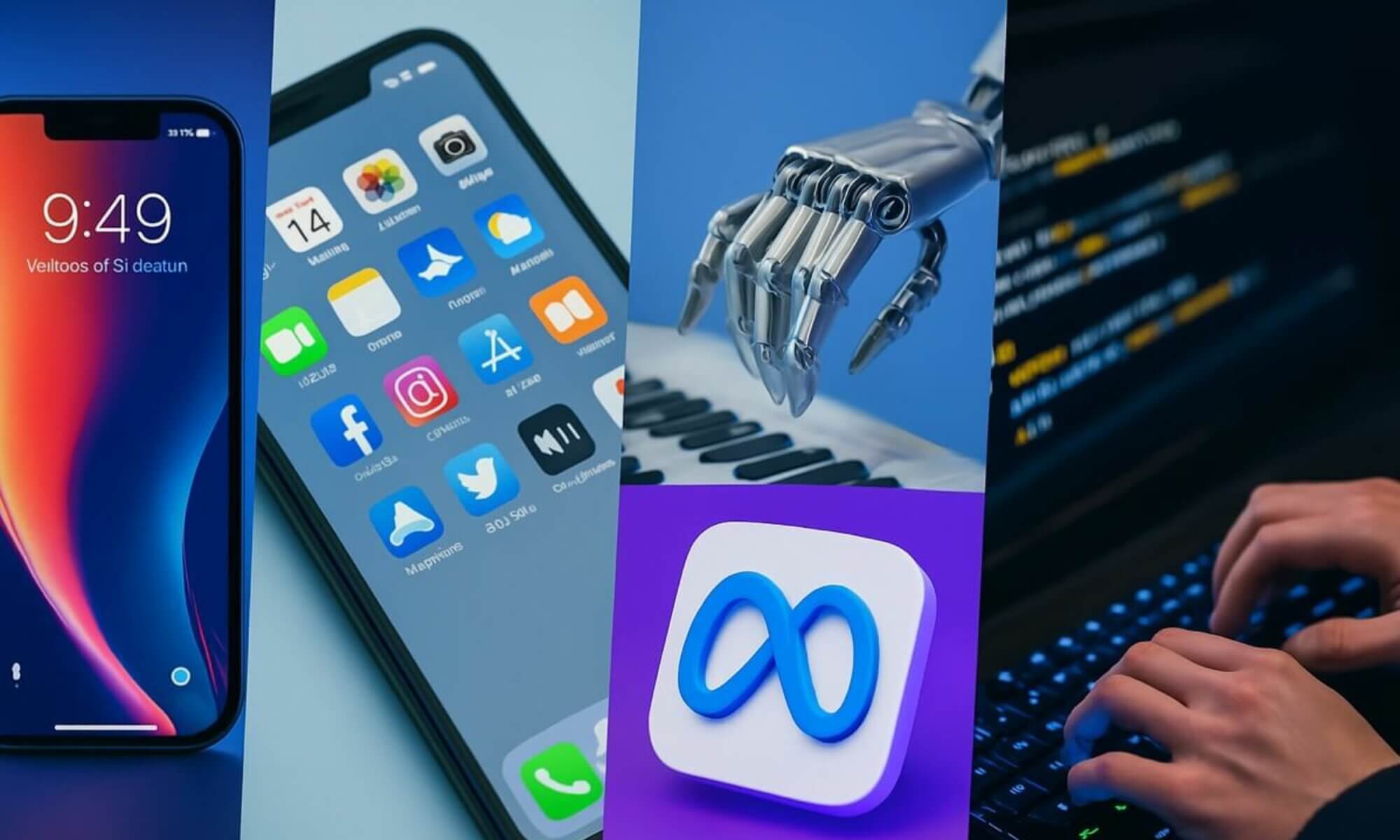As artificial intelligence (AI) continues to evolve rapidly, its transformative potential across various sectors is becoming increasingly apparent. However, despite the immense capabilities of AI systems, their integration into public service delivery remains surprisingly minimal. This gap indicates that the expertise garnered in academic institutions is not being effectively translated into public policies or governmental practices that could benefit society at large. Enhanced collaboration between AI researchers and government entities provides an avenue to harness AI’s power for public good, specifically in optimizing services, improving citizen engagement, and ultimately fostering a more resilient economy and society.
The limitations of current AI applications in public service delivery
The current landscape reveals a stark contrast between the advancements in AI technologies and their application in public services. While companies such as Google AI, IBM, and Microsoft Research are leading the charge in various AI innovations, the utilization of these technologies to enhance government services remains constrained. Many public institutions have yet to embrace Artificial Intelligence effectively, thereby limiting its transformative capabilities. For instance, endeavors to streamline access to government benefits through AI-driven chatbots or automate reporting systems for common issues like potholes are still in their infancy.
One notable case is that of Street.AI, a smartphone application designed to enable citizens to report neighborhood issues such as potholes or littering by simply taking a photo. While such prototypes demonstrate the promise of AI in solving real-world problems, they are often not fully realized in wider governmental practice. Furthermore, public-sector reliance predominantly on traditional mechanisms for reporting issues can exacerbate inefficiencies and slow response times, thus negatively impacting citizen satisfaction. The prevailing systems need to be transformed to align with modern technological capabilities so that public administrations can genuinely become more responsive and efficient.
The academic gap: Bridging theory and practice
One of the most significant barriers to effective collaboration is the disconnection between academic researchers and government entities. Academic pursuits often culminate in scholarly articles and conferences, but these findings frequently do not translate into practical applications or actionable strategies for public policymakers. Public officials seek demonstrable solutions that can lead to tangible results, while academics may be immersed in theory, providing insights without clear pathways to implementation.
To bridge this gap, a shift in mindset is necessary on both sides. First, academic researchers need to develop a product-focused perspective, moving beyond mere data dissemination to create tools that are user-friendly and applicable within governmental settings. Additionally, public institutions should proactively engage in incentive structures that foster collaboration with academics, allowing for a more streamlined approach to problem-solving that harnesses the latest research.
- Encourage public-private partnerships focused on AI applications.
- Establish grants and funding dedicated to collaborative projects.
- Host workshops and conferences to foster dialogue between researchers and policymakers.
The role of technology in decision-making
Another area where collaborative efforts can significantly enhance public service delivery is in decision-making processes. Complex decisions regarding urban planning, such as where to construct new housing, require consideration of numerous factors: school proximity, noise levels, flood risk, and community development ratios, among others. Yet, traditional methods often fall short of efficiently synthesizing this information into actionable insights for policymakers.
An AI-powered online dashboard that optimizes these parameters can serve as a game-changing tool for government decision-making. Instead of relying solely on lengthy academic reports, which may take considerable time to compile and analyze, such a platform would provide real-time data insights that can be easily interpreted by officials. This transition from static analysis to dynamic, data-driven insights represents an essential shift in how public policy can utilize technology for the betterment of society.
Enhancing transparency and accountability through AI
AI technology can also enhance transparency and accountability in government operations. By creating systems that allow for real-time data analysis and public access to governmental processes, citizens can hold their leaders accountable and engage more meaningfully in public life. For example, transparent tax collection and expenditure tracking systems powered by AI can illustrate how taxpayer money is utilized, thus fostering trust between citizens and politicians.
Applying AI can also pioneer innovative avenues for civic engagement, paving the way for citizens to contribute their insights into governance. Various platforms can emerge, enabling direct communication between citizens and civil servants, where concerns can be voiced, and suggestions made based on data interpretation. The potential for public sentiment analysis through social media and other online forums presents a pathway for governments to better understand their constituencies.
Successful case studies demonstrating AI in Governance
Across the globe, there are successful case studies that showcase the impact of integrating AI into public services:
- Estonia: This nation is hailed as a digital pioneer, utilizing AI to offer seamless access to a wide range of services including e-Governmental functions and tax filings.
- Singapore: Through its Smart Nation initiative, Singapore is employing AI technologies to improve urban living, optimize traffic systems, and even predict housing demand.
- Barcelona: The city is deploying AI-driven algorithms to monitor pollution levels while enabling city officials to respond swiftly to environmental issues.
| Country/City | AI Initiative | Outcome |
|---|---|---|
| Estonia | e-Governmental functions | Increased efficiency and accessibility |
| Singapore | Smart Nation initiative | Enhanced urban living |
| Barcelona | Pollution monitoring with AI | Responsive environmental action |
Fostering a culture of innovation through collaborative measures
Cultivating a collaborative culture between AI researchers and government entities can drive greater innovation and adaptability in governance. Establishing innovation labs within government institutions can provide a space for experimentation, testing, and iterative improvements. These labs can serve as incubators for new ideas, bringing together diverse stakeholders to develop and pilot AI-driven solutions aimed at solving pressing societal challenges.
Additionally, hackathons and competitions can galvanize talent from academia and industry, allowing researchers and developers to collaborate on AI projects that align with public interests. Such competitions can not only yield innovative technological solutions but also strengthen partnerships between various entities. A culture that celebrates experimentation, learning, and adaptation can lead to the discovery of groundbreaking advancements that enhance public welfare.
The importance of regulatory frameworks and ethical considerations
However, while pursuing enhanced collaboration through technology, it is critical to address the ethical implications associated with AI deployment in public services. Policymakers must consider the regulatory frameworks that govern AI technologies and prioritize transparent and responsible AI development. This can include policies that ensure data privacy, accountability, and equitable access to AI systems, as well as guidelines for the ethical application of AI in decision-making processes.
The collaboration must factor in the potential risks posed by AI, such as algorithmic biases, data security concerns, and the implications of surveillance technologies. By fostering an environment of ongoing dialogue and engagement, stakeholders can work toward ensuring that AI advancements align with societal values and do not undermine public trust.
Exploring the future of AI and public services
As governments continue to navigate the complexities of rapid technological advancements, the future of AI in public services holds significant promise. By harnessing the wealth of knowledge possessed by AI researchers and merging it with public service initiatives, a new paradigm for governance can emerge—one that leverages data and technology for civic empowerment and enhanced quality of life. Collaboration is no longer a choice but a necessity to drive meaningful change and innovation in the public sector.
To facilitate sustainable advancements, the following strategies could be perpetuated:
- Research partnerships between universities and government bodies must be prioritized to create frameworks for collaboration.
- Sustained funding for innovative partnerships that can focus on the enhancement of public services through AI.
- Awareness campaigns to promote understanding and usage of AI tools amongst public service workers and citizens alike.
Why is collaboration between AI researchers and government entities important?
Collaboration enables the integration of advanced AI technologies into public services, optimizing their effectiveness and accessibility.
How can AI improve transparency in government?
AI can enhance transparency by allowing citizens to access real-time data regarding government operations and expenditures.
What are some successful examples of AI in public services?
Estonia and Singapore have led the way with digital government initiatives that showcase successful AI applications.
What ethical considerations must be considered in AI collaborations?
Regulatory frameworks and ethical guidelines must ensure data privacy, accountability, and prevent biases.
How do innovation labs foster collaboration?
Innovation labs serve as incubators for experimentation and collaboration, leading to better AI solutions for public challenges.
What role do hackathons play in collaboration?
Hackathons bring together diverse talents from academia and industry to solve public problems using AI innovations.
Can AI help with urban planning?
Yes, AI can process complex data to optimize locations for housing and infrastructure projects.
What barriers exist to collaboration between AI researchers and the government?
A lack of communication and differing priorities often impede effective collaboration between these two sectors.
What benefits do citizens gain from AI in public services?
Citizens can expect more efficient services, greater accessibility, and increased responsiveness from public institutions.
How can government entities incentivize collaboration?
Governments can create funding opportunities, grants, and networking events to promote collaboration with researchers.


